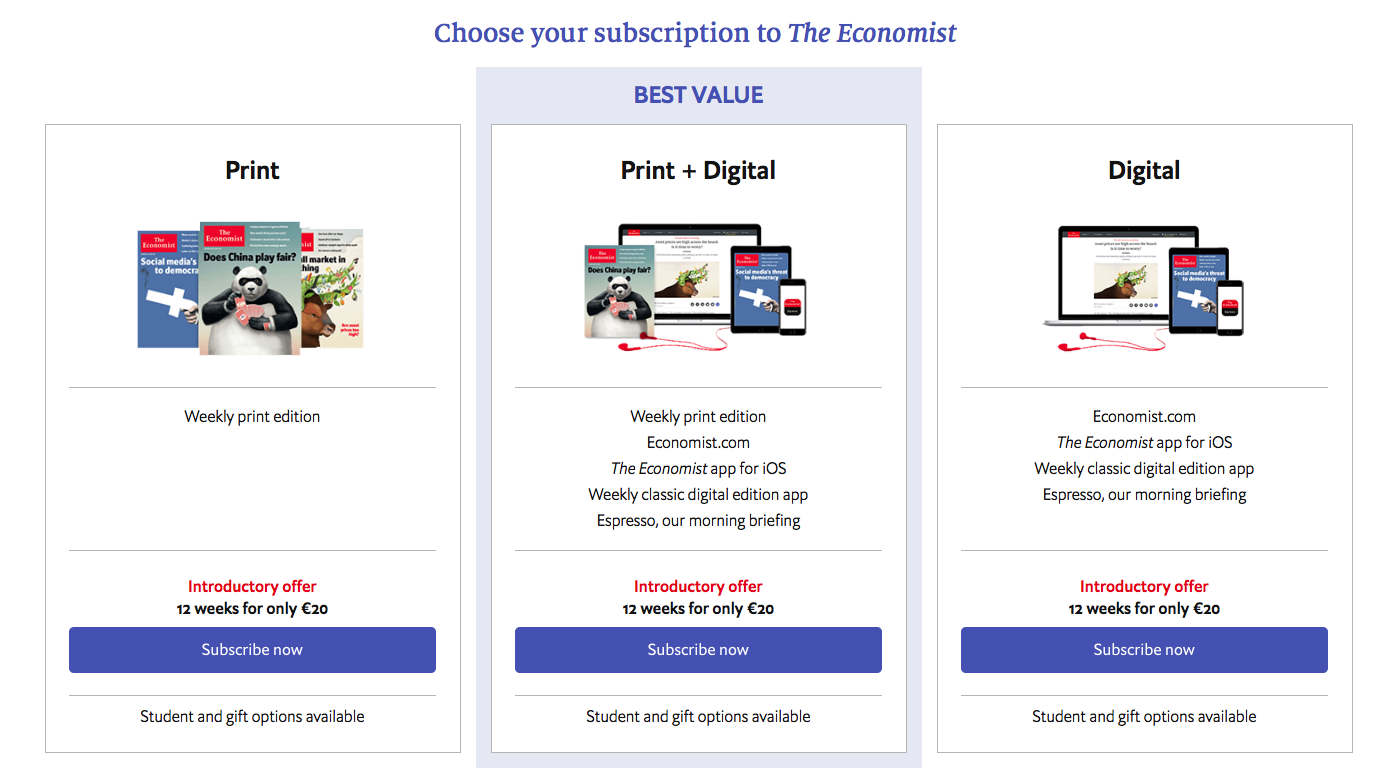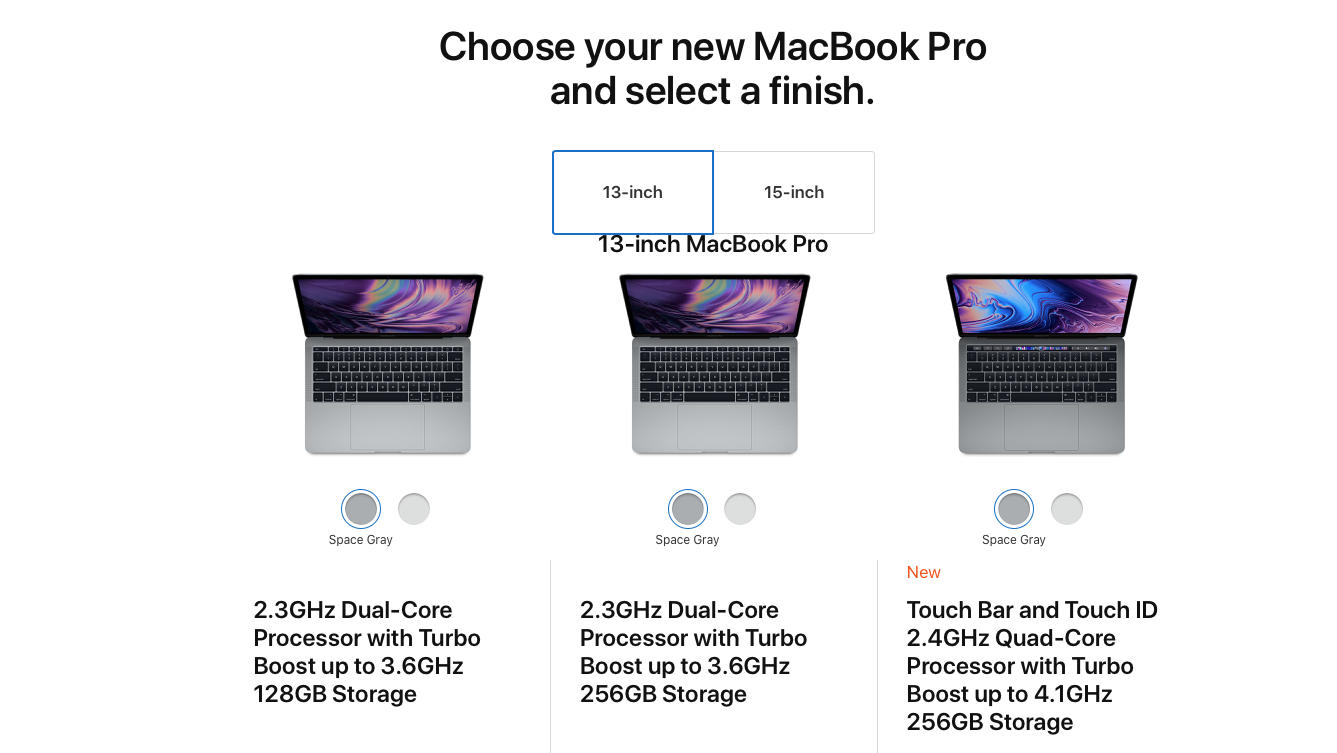Also known as the asymmetric dominance effect, decoy effect refers to the phenomenon where people tend to change their original preference between two choices when they are presented with an asymmetric third choice[1]. Consumers might increase their preference for a product that is of better quality over a cheaper product that is of lower quality when they are presented with a third choice that is relatively worse than the first product in terms of quality, price, or both[2]. Postulated by American marketing professor Joel Huber, the decoy effect is employed by marketing companies to influence the choices of consumers in a subtle manner[3].
How magazines use decoy effect
The Economist, New York Times, and several magazines employ the decoy effect to promote membership subscriptions. The Economist offered 3 different types of subscriptions:
- Web Subscription – $59
- Print Subscription – $125
- Web and Print Subscription – $125
The first (Web) offer seems reasonable at $59. The second option (only print) seems a bit expensive, but the third option – both Web and Print for the same price as the print-only subscription – seems to be a great offer. To further entice subscriptions, The Economist offered the three subscriptions at the same price.

Experimental results
Dan Ariely, a Professor of psychology and behavioral economics and author of Predictably Irrational, tested this phenomenon with his MIT students. During this test, he asked the students to choose a subscription. The results were as follows:
- Web Subscription – $59 (16 students)
- Print Subscription – $125 (0 students)
- Web and Print Subscription – $125 (84 students)
Total revenue: $11,444
The majority of students selected the third option (dominating) and none of them selected the second option (the decoy). Ariely performed a second test and removed the decoy product and the results were:
- Web Subscription – $59 (68 students)
- Web and Print Subscription – $125 (32 students)
Total revenue: $8,012
This time, however, most of the students preferred the first subscription. By adding a decoy product, Ariely improved the subscriptions by c.a. 30%.
How Apple uses the decoy effect
Apple Inc. has mastered the decoy effect to direct customer purchases. When Apple unveiled its new iPod, the pricing was as follows:
- 16GB for $229
- 32GB for $299
- 64GB for $399
In other words, you get double the storage capacity for an additional $70; you also get more features, such as a 5MP iSight camera and iPod Touch Loop. However, if you opt for double the capacity (32GB to 64GB), you pay an additional $100, but you don’t get extra features. Therefore, you might conclude that the 32GB version offers the best value for money. So, only a few would buy the 16GB version and even fewer would opt for the 64GB version. But, the fact is, the 16GB and the 64GB versions are the decoys to make the 32GB version more appealing and the best option. Apple also uses the decoy effect for its higher-priced products, such as MacBook Pro.

Restaurants use the decoy effect when designing menu cards; the design is based on guiding the person to those dishes with the highest profit margin. Likewise, the decoy effect can be used to influence elections, as Shankar Vendentam discussed in the Washington Post. The 3rd candidate in a major election is the decoy, causing voters to choose between the two front-runners.
The decoy effect is subtle, yet powerful. Once you begin to understand how it works, you start to see it everywhere.
References
| ↑1 | Bateman, I. J., Munro, A., & Poe, G. L. (2008). Decoy effects in choice experiments and contingent valuation: Asymmetric dominance. Land Economics, 84(1), 115-127 |
|---|---|
| ↑2 | The Paradox of Choice: Why More Is Less, Barry Schwartz |
| ↑3 | Adding Asymmetrically Dominated Alternatives: Violations of Regularity and the Similarity Hypothesis |




